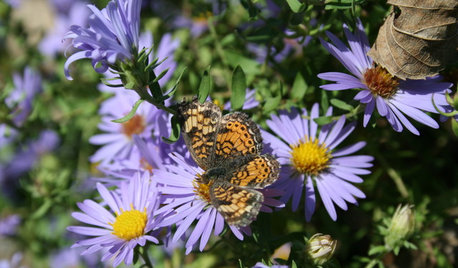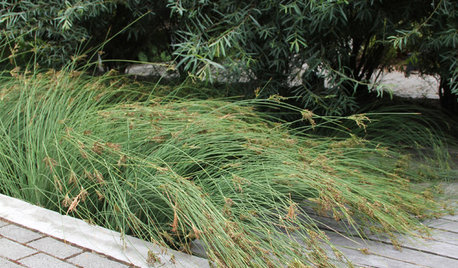Need research to support grassland conservation vs. maniac mower
squirrel_girl
17 years ago
Related Stories

MOST POPULARMeet a Lawn Alternative That Works Wonders
Carex can replace turfgrass in any spot, is low maintenance and adjusts easily. Add its good looks and you’ve got a ground cover winner
Full Story
FRONT YARD IDEASBefore and After: Front Lawn to Prairie Garden
How they did it: Homeowners create a plan, stick to it and keep the neighbors (and wildlife) in mind
Full Story

GARDENING GUIDESThe Art of Green Mulch
You can design a natural garden that doesn’t rely on covering your soil with wood and bark mulch
Full Story
GREEN BUILDINGHouzz Tour: Passive House in Vermont Slashes Heating Bills
Its ecofriendly, low-maintenance design leaves a family with more time to relax and enjoy the weekend home
Full Story
EARTH DAYHow to Design a Garden for Native Bees
Create a garden that not only looks beautiful but also nurtures native bees — and helps other wildlife in the process
Full Story
GARDENING GUIDES15 Ideas to Try in Your Garden This Year
These gardening stories were tops among Houzz readers. Which ideas might you try this year?
Full Story
GARDENING FOR BUTTERFLIES3 Ways Native Plants Make Gardening So Much Better
You probably know about the lower maintenance. But native plants' other benefits go far beyond a little less watering and weeding
Full Story
GARDENING GUIDESProtect a Precious Resource With a Rain Garden
Promote pure water and a beautiful landscape with a garden design that makes the most of the rain
Full Story
LANDSCAPE DESIGNIs It Time to Consider Fake Grass?
With more realistic-looking options than ever, synthetic turf can be a boon. Find the benefits and an installation how-to here
Full StorySponsored
More Discussions






Elly_NJ
ericwi
Related Professionals
Simpsonville Landscape Architects & Landscape Designers · Wilmington Landscape Contractors · Lady Lake Landscape Contractors · Las Vegas Landscape Contractors · Lorain Landscape Contractors · Merced Landscape Contractors · Ponte Vedra Beach Landscape Contractors · Rockland Landscape Contractors · Roswell Landscape Contractors · Siloam Springs Landscape Contractors · The Woodlands Landscape Contractors · Shafter Landscape Contractors · Eustis Driveway Installation & Maintenance · Ocala Driveway Installation & Maintenance · Los Alamitos Swimming Pool Buildersgardeningfireman
lisa11310
squirrel_girlOriginal Author